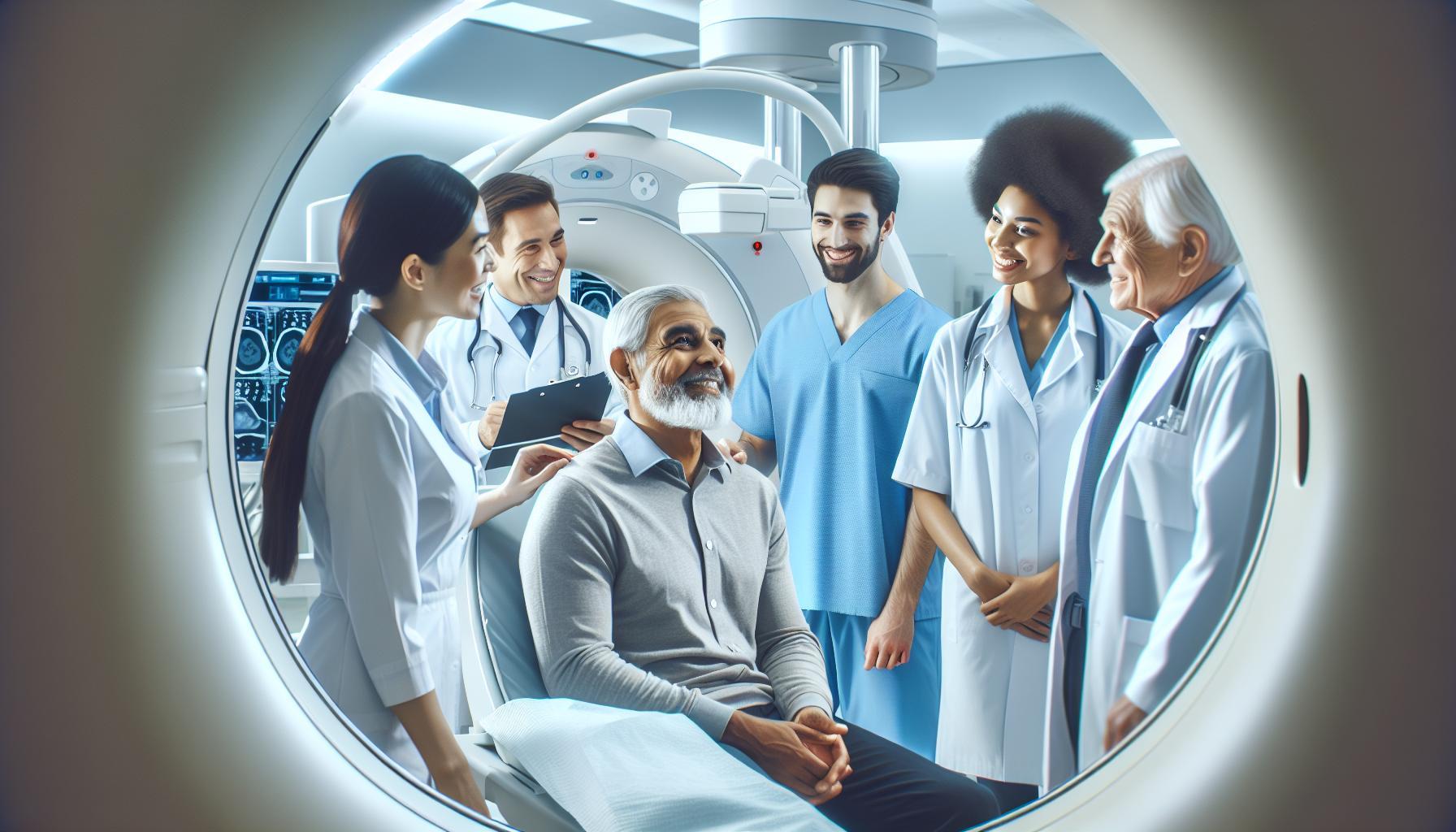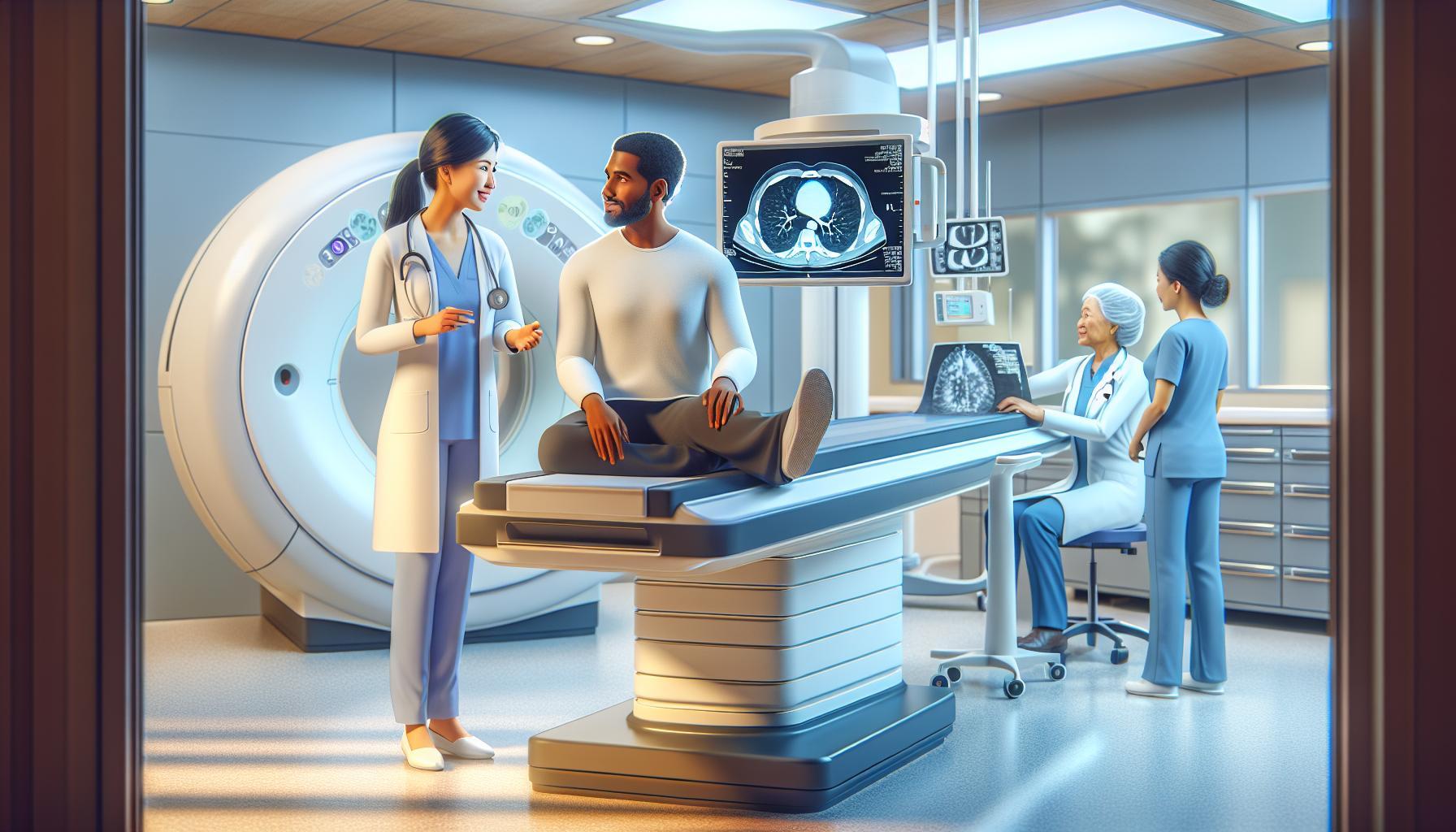A CT scan of the abdomen is a powerful imaging technique that provides detailed pictures of the organs and structures within your abdominal cavity. This non-invasive test is crucial for diagnosing a wide range of conditions, from appendicitis to tumors, aiding healthcare professionals in making informed decisions about treatment.
Understanding what a CT scan can reveal might ease your concerns and provide clarity about your health. Many people feel anxious about undergoing medical procedures, yet this scan can often uncover hidden issues that might not be visible through other imaging methods. As you delve into this complete guide, you’ll discover how CT imaging works, what to expect during the procedure, and the different conditions it can help identify. Stay with us to empower yourself with knowledge that can enhance your healthcare experience and support informed discussions with your medical team.
What Is a CT Scan of the Abdomen?
A CT scan of the abdomen is a powerful imaging tool that utilizes X-ray technology to create detailed cross-sectional images of the internal structures. This imaging technique transforms multiple X-ray images taken from different angles into a single comprehensive view, thus providing healthcare providers with invaluable information about a patient’s abdominal organs and surrounding tissues. With its ability to capture fine details, this scan is particularly effective in diagnosing various medical conditions, helping to identify issues such as tumors, infections, and internal injuries.
One of the primary functions of an abdominal CT scan is to offer insight into the health of solid organs, including the liver, pancreas, kidneys, and spleen, among others. It is instrumental in evaluating unexplained abdominal pain, aiding in both the diagnosis and treatment planning for various conditions. For example, if a patient presents with acute abdominal symptoms, the scan can quickly elucidate whether there’s an inflammatory process, a mass, bleeding, or other structural abnormalities. This immediate clarity can significantly influence the management decisions and expedite appropriate care.
The process typically lasts just a few minutes, making it convenient for patients. During the scan, a technician will position the patient on a movable table that slides into the CT scanner, which resembles a large donut. Depending on the reason for the scan, a contrast agent may be used to enhance image quality; this allows for clearer visualization of blood vessels and organs. Although some patients may experience slight discomfort from the contrast or feel claustrophobic inside the machine, the procedure is generally safe and well-tolerated.
In summary, a CT scan of the abdomen provides crucial insights that facilitate timely and accurate diagnosis and treatment. Its non-invasive nature combined with the detailed imaging it offers makes it a cornerstone tool in modern medicine for managing abdominal health concerns. Always discuss any questions or concerns with your healthcare provider to fully understand the procedure’s benefits and implications tailored to your specific situation.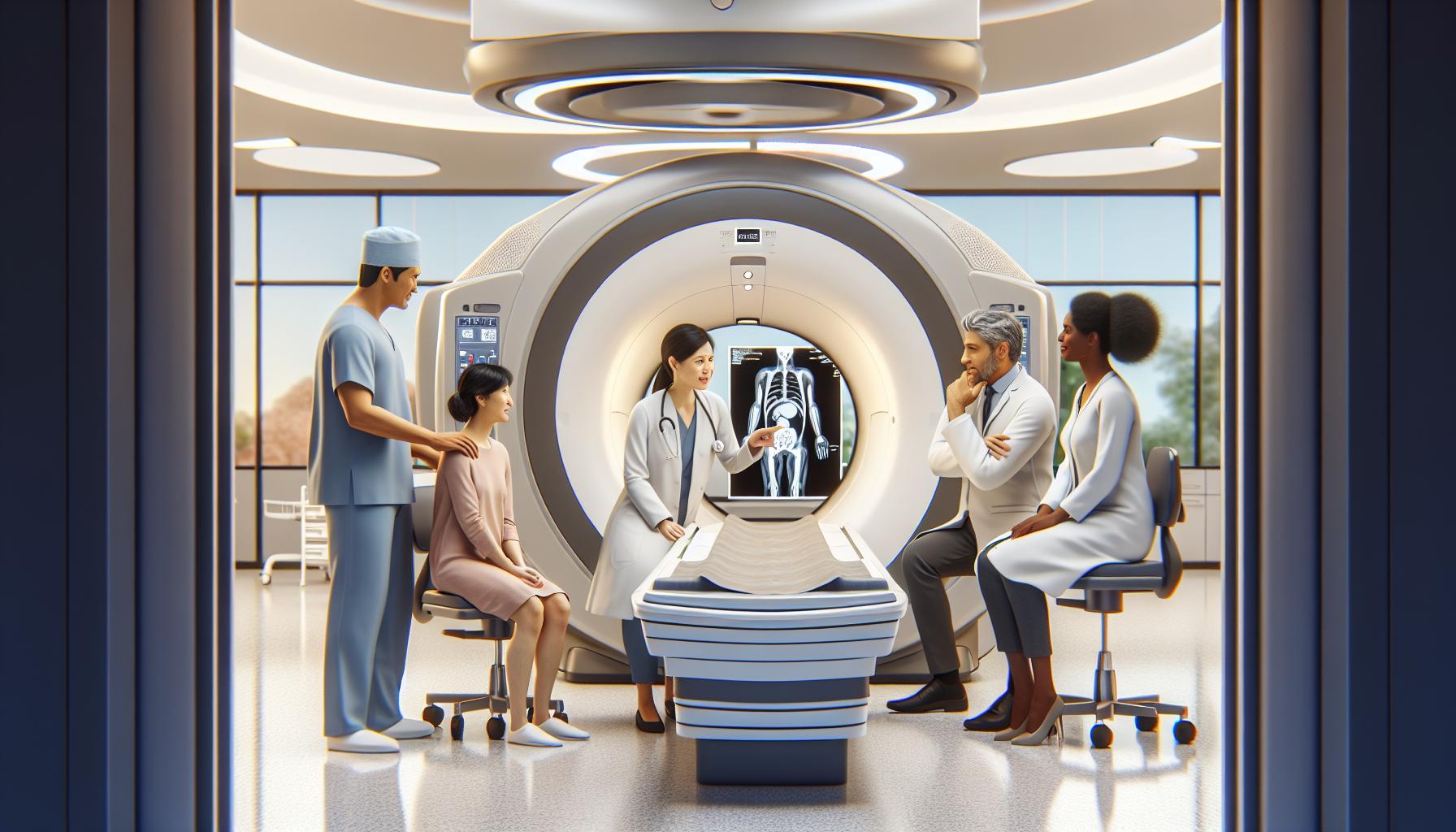
Understanding the Purpose of an Abdominal CT Scan
An abdominal CT scan serves as a key tool in modern medicine, offering a wealth of information about the internal structures of the body. This advanced imaging technology can reveal intricate details about organs and tissues within the abdominal cavity, allowing healthcare providers to make informed diagnostic decisions. For instance, it can identify abnormalities such as tumors, cysts, or signs of inflammation, making it an essential part of managing various abdominal conditions.
Understanding the purpose behind this imaging study involves recognizing its role in diagnosing and monitoring health issues. If a patient presents with unexplained abdominal pain, a CT scan can quickly provide clarity by revealing underlying conditions such as appendicitis, pancreatitis, or even cancers affecting organs like the liver or pancreas. Moreover, it aids in assessing the severity of injuries in trauma cases, ensuring that patients receive the prompt and appropriate care they need.
The insights gained from a CT scan are invaluable not only for identifying existing conditions but also for formulating treatment plans. For instance, knowing the exact location and size of a tumor can guide surgical decisions or the need for further interventions. Additionally, the scan can be used to monitor ongoing treatment progress, such as evaluating the effectiveness of chemotherapy for cancer patients. This capability underscores the importance of CT scans in both diagnostic and therapeutic contexts, fundamentally enhancing patient outcomes.
It’s important to approach a CT scan with a clear understanding of its role and potential benefits. While the imaging process may evoke some anxiety, knowing that it can provide crucial answers and facilitate timely treatment can be reassuring. As always, it’s recommended to discuss any concerns with a healthcare provider, who can offer further insights tailored to individual medical needs.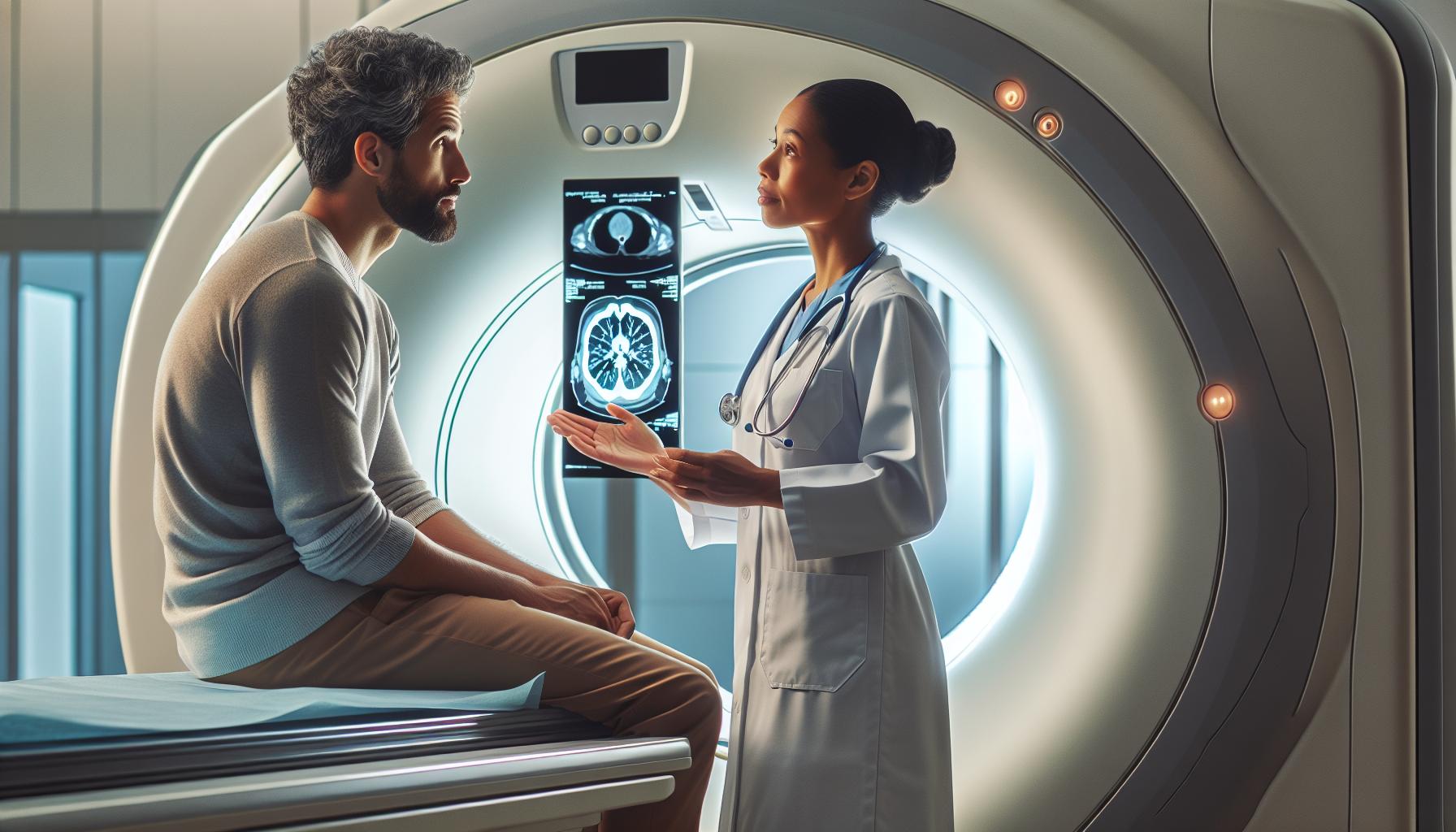
How to Prepare for Your CT Scan Appointment
Preparing for a CT scan can significantly reduce anxiety and help ensure that your appointment goes smoothly. Understanding what to expect and how to get ready can make the process simpler and more manageable. This imaging procedure, particularly for the abdomen, is often critical for diagnosing and treating various conditions, making your preparation essential.
Before the procedure, it’s common for healthcare providers to recommend abstaining from food and drink for several hours. Typically, fasting for about 4 to 6 hours prior to the scan is advised, especially if a contrast dye is to be used to enhance image quality. This means consuming no solid food and only clear liquids. If you take medications, discuss with your doctor whether you should take them as usual during the fasting period. Also, inform your healthcare team about any allergies, particularly to iodine, as this is crucial if contrast material is needed.
During your appointment, you might be asked to change into a hospital gown to ensure that no clothing or accessories interfere with the imaging. Items like jewelry, hair clips, or belts should also be removed, so it’s best to leave them at home if possible. After checking in, a technician will provide specific instructions about lying down in the scanner, remaining still, and possibly breathing instructions during the imaging process.
As technology evolves, some facilities may offer more comfortable or advanced modalities, including the option of virtual CT scans. Understanding these details will help you feel more at ease on the day of your scan. Always feel empowered to ask questions and clarify any uncertainties with your medical provider, as they can address your specific concerns and ensure that you are fully prepared for your CT scan.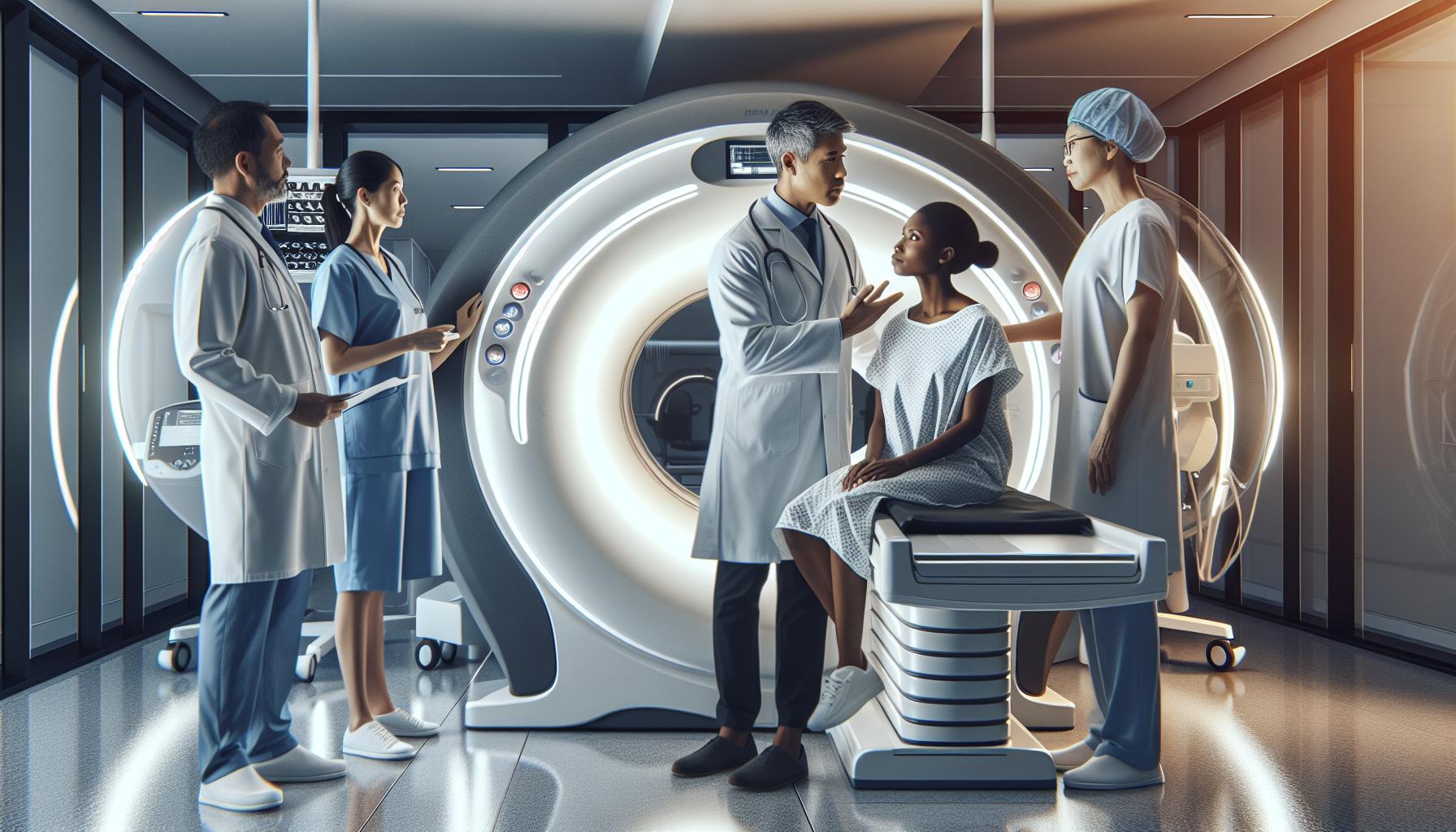
What to Expect During the CT Scan Process
A CT scan of the abdomen is a precise imaging technique that delivers high-quality images of internal organs, allowing for comprehensive evaluation of various conditions. As you prepare for your scan, understanding what to expect can significantly ease your anxiety and help you feel more in control of the situation.
Upon arrival at the imaging facility, you will check in and may need to change into a hospital gown. This ensures that your clothing does not interfere with the scanning process. After this, a technician will guide you to the CT scanner, which resembles a large, doughnut-shaped machine. You’ll be instructed to lie down on a movable table that slides in and out of the scanner. It’s important to remain as still as possible during the scanning process to avoid blurry images. The technician might ask you to hold your breath briefly when the scan is in motion. This part of the procedure usually lasts just a few minutes, but the entire appointment may take longer due to preparations and waiting times.
While undergoing the CT scan, you might be exposed to a small amount of ionizing radiation, but the benefits of having a detailed view of your abdominal organs usually outweigh the risks. If a contrast dye is used to enhance the images, you’ll receive this through an intravenous line, and you may feel a warm sensation throughout your body, which is entirely normal. Understanding these details can help reassure you that the procedure is designed with your safety in mind.
After the scan is complete, you can resume your normal activities unless otherwise directed by your healthcare provider. The images will be analyzed by a radiologist, who will send a report to your doctor. Your healthcare provider will discuss the results with you shortly after, helping you understand what the findings mean for your health moving forward. Always remember, if you have questions or concerns about the CT scan process, do not hesitate to ask your healthcare team for clarification and support.
Key Areas Examined in an Abdominal CT Scan
A CT scan of the abdomen is a powerful diagnostic tool that provides detailed images of the internal anatomy, allowing healthcare providers to assess various structures effectively. Understanding the key areas examined during this procedure can help alleviate any apprehensions you may have and give you clarity on its purpose.
One of the primary areas evaluated is the liver, which is crucial for metabolism and detoxification. A CT scan can help identify conditions such as tumors, liver cirrhosis, or fatty liver disease. Additionally, the gallbladder and bile ducts are scrutinized to check for gallstones or inflammation, which can lead to severe abdominal pain or complications.
Other vital organs include the pancreas, which plays a significant role in digestion and blood sugar regulation. Imaging can reveal pancreatic tumors or conditions like pancreatitis. The kidneys and adrenal glands are also assessed, providing insights into potential kidney stones, masses, or other abnormalities. Furthermore, the spleen is evaluated for signs of enlargement or injury, as it is vital for immune function and blood cell storage.
Finally, the intestines are closely examined to detect diseases such as Crohn’s disease, appendicitis, or bowel obstructions. This comprehensive view of the abdominal cavity allows for the early detection of serious conditions, ultimately guiding treatment decisions.
Staying informed about what the scan entails can empower you as a patient, so don’t hesitate to discuss any specifics with your healthcare provider before the procedure. Understanding these key areas examined can ease any anxiety and underline the importance of this valuable diagnostic tool in managing your health.
Common Conditions Diagnosed with CT Imaging
An abdominal CT scan can reveal a wide array of conditions, helping doctors pinpoint issues that might otherwise go undetected. This advanced imaging technique excels in diagnosing several critical health problems, providing clarity and direction for treatment.
Among the most common conditions diagnosed through CT imaging are tumors and cancers. The scan is particularly adept at identifying malignancies in the liver, pancreas, kidneys, and other abdominal organs. For instance, pancreatic cancer, often challenging to catch in its early stages, can be visualized with remarkable precision, increasing the likelihood of timely intervention. Additionally, the scan allows physicians to monitor the progression of existing tumors and assess the efficacy of ongoing treatment.
Other frequent diagnoses include inflammatory diseases such as appendicitis, diverticulitis, and pancreatitis. In cases of appendicitis, CT imaging helps differentiate between inflammation and similar conditions that may mimic its symptoms, ensuring appropriate surgical or medical treatment is provided. Furthermore, CT scans play a crucial role in identifying obstructions or perforations within the intestines, which can lead to severe complications if left untreated.
With its ability to highlight vascular issues, a CT scan can also aid in diagnosing conditions like aneurysms or blood clots within the abdominal cavity, which could pose significant health risks. Each of these findings not only assists in making a definitive diagnosis but also informs further management and care strategies tailored to each patient’s needs.
In summary, the versatility and precision of abdominal CT scans make them invaluable in the diagnostic process, providing essential insights into a range of health concerns. Empowering patients with knowledge about what conditions can be diagnosed encourages proactive conversations with their healthcare providers, fostering a more informed approach to their health management.
Interpreting CT Scan Results: What They Mean
Interpreting the results of an abdominal CT scan can be a crucial step in understanding your health. These scans generate detailed images of your internal organs, and the findings can provide insight into various conditions, ranging from benign issues to more serious diseases. When you receive your CT scan results, it’s essential to approach them with a sense of clarity and purpose, as this information can significantly impact your treatment plan.
Doctors will typically assess several key aspects of the scan, including the size, shape, and density of organs such as the liver, pancreas, and kidneys. Abnormalities in these areas might indicate conditions such as tumors, infections, or inflammations. For example, a solid mass in the liver could raise suspicion for liver cancer, while swollen lymph nodes might suggest lymphoma or another type of cancer. Understanding these potential implications can help steer your discussions with your healthcare provider regarding next steps.
To simplify your comprehension of the results, consider the following common terms and what they might indicate:
- Lesion: A term that refers to an abnormal area of tissue, which could indicate inflammation or a tumor.
- Mass: This typically suggests a solid growth that may require further investigation through biopsies or additional imaging.
- Cyst: A fluid-filled sac that can be benign, but sometimes further evaluation is warranted to rule out malignancy.
- Obstruction: This may denote a blockage that can occur in the intestines or kidneys, possibly leading to pain or other complications.
After receiving the results, it’s vital to discuss them thoroughly with your doctor. They can explain the significance of each finding in the context of your symptoms and medical history. It’s normal to feel anxious while waiting for results, but remember that early detection of any abnormalities can lead to more effective treatment strategies. Being proactive about understanding your results empowers you to engage actively in your healthcare decisions, fostering a collaborative relationship with your medical team.
CT Scan Risks and Safety Considerations
Experiencing a CT scan can feel daunting, especially when considering the associated risks and safety considerations. It’s vital to understand that while a CT scan of the abdomen can provide detailed images necessary for diagnosing various conditions, it does involve the use of radiation. This is one of the main concerns patients often express. CT scans typically expose patients to higher doses of radiation than standard X-rays. However, healthcare professionals use the lowest amount of radiation necessary to achieve accurate results, and the benefits of obtaining critical diagnostic information usually outweigh the risks.
Another factor to consider is the use of contrast materials, which may be administered either orally or intravenously to enhance image clarity. While most people tolerate these materials well, some can experience allergic reactions, which may range from mild symptoms, such as itching or a rash, to more severe reactions like difficulty breathing. It’s essential to inform your healthcare provider if you have any history of allergies or kidney issues, as this information can help tailor the procedure to minimize risks.
Radiation Exposure and Contrast Material Safety
The risk of radiation exposure is cumulative; thus, if you have had multiple imaging studies in the past, you should discuss this with your doctor. They may help assess the necessity of the scan and possibly recommend alternative imaging techniques that do not involve radiation, such as ultrasound or MRI, especially for certain patient groups, like children who are more sensitive to radiation.
Additionally, hydration plays a crucial role in safety considerations, particularly when contrast materials are used. Drinking plenty of fluids before and after the scan can help flush the dye out of your system, reducing the likelihood of any potential kidney complications.
To summarize, while there are inherent risks associated with abdominal CT scans, they are generally considered safe when conducted under controlled conditions. The key is to maintain open communication with your healthcare team, ensuring that you understand the reasons for the scan and the safety measures involved. By doing so, you can alleviate much of the anxiety surrounding this procedure, empowering yourself with knowledge and reassurance.
Cost of an Abdominal CT Scan: What to Know
When it comes to understanding the financial aspects of an abdominal CT scan, it’s essential to know that costs can vary significantly based on a variety of factors, including location, the facility where the scan is performed, and whether you have insurance. On average, a CT scan of the abdomen without insurance may cost around $597.80, although this price can range widely. In some instances, patients can negotiate lower rates if they are uninsured or can ask about cash payment discounts at the imaging facility.
If you have health insurance, your out-of-pocket expense could be considerably lower. Many insurance plans cover a large portion of the cost, making your responsibility potentially as low as $300 to $800, depending on your plan’s specifics and deductible status. It’s always a good idea to check with your insurance provider beforehand to understand what your benefits cover and any potential remaining costs you might incur [[1](https://www.talktomira.com/post/how-much-does-a-ct-scan-cost-without-insurance)][[2](https://www.consumershield.com/insurance/health-insurance/ct-scan-cost)].
To further navigate the costs of an abdominal CT scan, consider these practical steps:
- Verify Insurance Coverage: Contact your health insurance provider to understand the specifics of your coverage, out-of-pocket costs, and whether you need a pre-authorization.
- Inquire About Facility Fees: Differing facilities, such as hospitals versus independent imaging centers, may charge varying rates, so compare costs before making an appointment.
- Ask About Payment Options: If cost is a concern, discuss payment plans or discounts available for self-pay patients with the facility beforehand.
- Consider Financial Assistance: Some hospitals offer financial assistance programs for patients facing high costs or uninsured patients.
Being well-informed about the potential costs and what to expect can help alleviate some of the anxiety surrounding the process. By discussing your concerns openly with your healthcare provider and the imaging facility, you can ensure a smoother experience, both medically and financially.
Alternatives to CT Scans for Abdominal Imaging
When considering , it’s important to know that there are effective options available that may mitigate exposure to radiation and still provide high-quality diagnostic information. Many healthcare providers explore these alternatives based on specific patient needs, health concerns, and the type of diagnostic information required.
One widely used method is ultrasound, which utilizes sound waves to create images of the organs in the abdomen. It is particularly beneficial for assessing conditions related to the liver, gallbladder, kidneys, and blood vessels. Ultrasound is safe, painless, and does not involve radiation, making it an excellent choice for pregnant patients and for monitoring certain abdominal conditions over time.
Magnetic Resonance Imaging (MRI) is another powerful alternative that provides detailed images of soft tissues without using ionizing radiation. MRIs are especially useful for identifying tumors or abnormalities in organs like the liver, pancreas, and kidneys. It can also assess blood flow and conditions affecting the abdominal muscles and joints. However, MRI may not be suitable for all patients, particularly those with certain implanted medical devices.
X-rays with a focused approach, such as abdominal X-rays, can help evaluate bowel obstruction or perforations. While not as comprehensive as CT scans or MRIs, they are quick and effective in diagnosing certain acute conditions. Additionally, fluoroscopy, which is a type of continuous X-ray imaging, can help visualize the gastrointestinal tract. Patients swallow a contrast material, enabling dynamic imaging of the digestive organs.
When determining the appropriate imaging technique, it’s essential to consult with a healthcare provider, who will consider factors including each method’s risks and benefits, the patient’s health history, and the specific clinical question to be answered. By understanding these alternatives, patients can engage in informed discussions with their healthcare teams to choose the most suitable imaging modality for their circumstances.
Frequently Asked Questions About Abdominal CT Scans
It’s completely normal to have questions and concerns when considering an abdominal CT scan. Understanding the procedure can alleviate anxiety and help you feel more prepared. Here are some common queries that many patients have about this imaging technique.
What Exactly Is an Abdominal CT Scan?
An abdominal CT (computed tomography) scan is a diagnostic imaging test that uses X-rays to create detailed cross-sectional images of the abdomen. This method is particularly effective for visualizing organs such as the liver, pancreas, kidneys, and spleen, enabling healthcare providers to pinpoint abnormalities that may indicate various medical conditions.
What Should I Expect During the Procedure?
During the scan, you will lie on a table that moves into the CT scanner. You may be required to hold your breath briefly as images are taken. While a few patients report feeling slight discomfort due to the IV contrast (if used), the procedure itself is generally quick-typically lasting about 10 to 30 minutes. It’s essential to remain still so that the images can be as clear as possible.
How Do I Prepare for the Scan?
Preparation for an abdominal CT scan can vary slightly depending on whether you will receive a contrast material to enhance the images. Your doctor will typically advise fasting for a few hours prior to the test. If you’re using oral contrast, you’ll need to drink this substance 1-2 hours before the procedure to help highlight your gastrointestinal tract.
Are There Risks Involved?
CT scans involve exposure to ionizing radiation, which can be a concern. However, healthcare providers weigh the risks against the benefits based on your medical history and symptoms. If you’re pregnant or suspect you may be, inform your doctor, as alternative imaging methods like ultrasounds may be recommended. Instances of allergic reactions to contrast materials, though rare, are also possible-always discuss your allergy history with your provider.
Remember, the insights gained from a CT scan can be invaluable in determining the course of your treatment, and advances in technology have made these scans safer than ever. Always consult with your healthcare provider for specific recommendations tailored to your situation. Their expertise can help guide you through the process, ensuring that all your questions and concerns are addressed.
FAQ
Q: What organs are typically visible in an abdominal CT scan?
A: An abdominal CT scan typically shows the liver, kidneys, pancreas, spleen, gallbladder, intestines, and major blood vessels. It provides detailed images to help diagnose issues like inflammation, tumors, or bleeding. For specifics on areas examined, see the “Key Areas Examined in an Abdominal CT Scan” section of our guide.
Q: How does a CT scan differ from an MRI for abdominal imaging?
A: A CT scan uses X-rays to create detailed images of the abdomen, while an MRI uses magnetic fields and radio waves. CT scans are often faster and better for detecting acute issues like trauma or bleeding, while MRIs provide superior soft tissue contrast. For more details, refer to the “Alternatives to CT Scans for Abdominal Imaging” section.
Q: What can a CT scan of the abdomen reveal about abdominal pain?
A: A CT scan can reveal underlying issues such as appendicitis, kidney stones, tumors, or infections that may be causing abdominal pain. It helps doctors see problems that might not be apparent during a physical exam. More information can be found in the “Common Conditions Diagnosed with CT Imaging” section.
Q: Are there any side effects from a CT scan of the abdomen?
A: Generally, CT scans are safe, but potential side effects include exposure to radiation and allergic reactions to the contrast dye used in some scans. It’s essential to discuss any concerns with your healthcare provider. See the “CT Scan Risks and Safety Considerations” section for more details.
Q: What should I inform my doctor about before undergoing a CT scan?
A: Before a CT scan, inform your doctor about any allergies, especially to contrast dye, existing medical conditions, and if you’re pregnant or breastfeeding. This information helps ensure your safety during the procedure. Find more guidance in the “How to Prepare for Your CT Scan Appointment” section.
Q: How long does it take to receive results from an abdominal CT scan?
A: Results from an abdominal CT scan are typically available within a few hours to a couple of days, depending on the facility’s processes and the complexity of the scan. Your doctor will discuss the findings with you promptly. For further insights, check the “Interpreting CT Scan Results: What They Mean” section.
Q: Can I eat or drink before an abdominal CT scan?
A: This depends on whether you will receive contrast dye. Typically, patients are advised to fast for a few hours beforehand to ensure clearer images. Check the “How to Prepare for Your CT Scan Appointment” section for specific guidelines based on your situation.
Q: What can I do if I feel anxious about my upcoming CT scan?
A: If you’re feeling anxious about your CT scan, consider discussing your concerns with your healthcare provider, who can offer reassurance and information. Practicing deep breathing or mindfulness techniques may also help. To manage expectations, refer to the “What to Expect During the CT Scan Process” section for clarity on the procedure.
In Conclusion
In summary, a CT scan of the abdomen is a powerful tool for diagnosing conditions ranging from tumors to organ abnormalities, providing invaluable insights into your health. If you’re preparing for a CT scan, remember that knowing what to expect can minimize anxiety and empower you to take an active role in your healthcare journey. To learn more about the types of abdominal issues a CT scan can identify, check out our articles on “Understanding Abdominal Pain” and “Preparing for Your First CT Scan.”
Don’t hesitate to reach out for more resources, or consider subscribing to our newsletter for updates on medical imaging and health topics. Your path to understanding and peace of mind starts with informed decisions, so if you have lingering questions, ask a healthcare professional or comment below! Explore the importance of these insightful procedures-your health is worth it!



